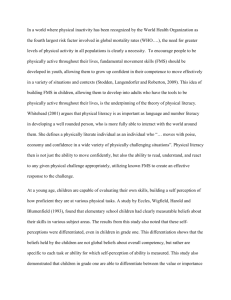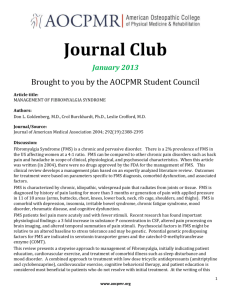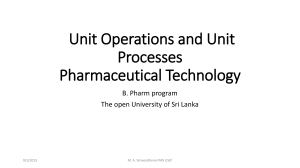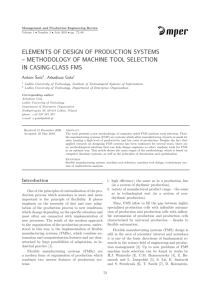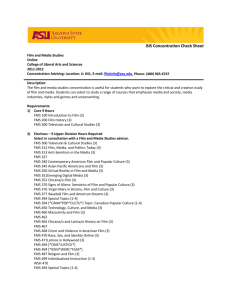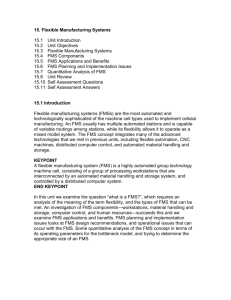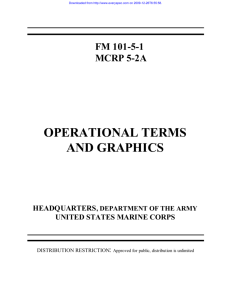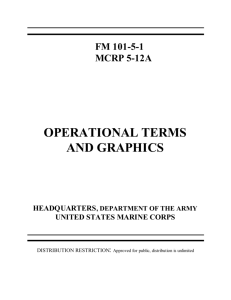Forces Modeling and Simulation (FMS)
advertisement
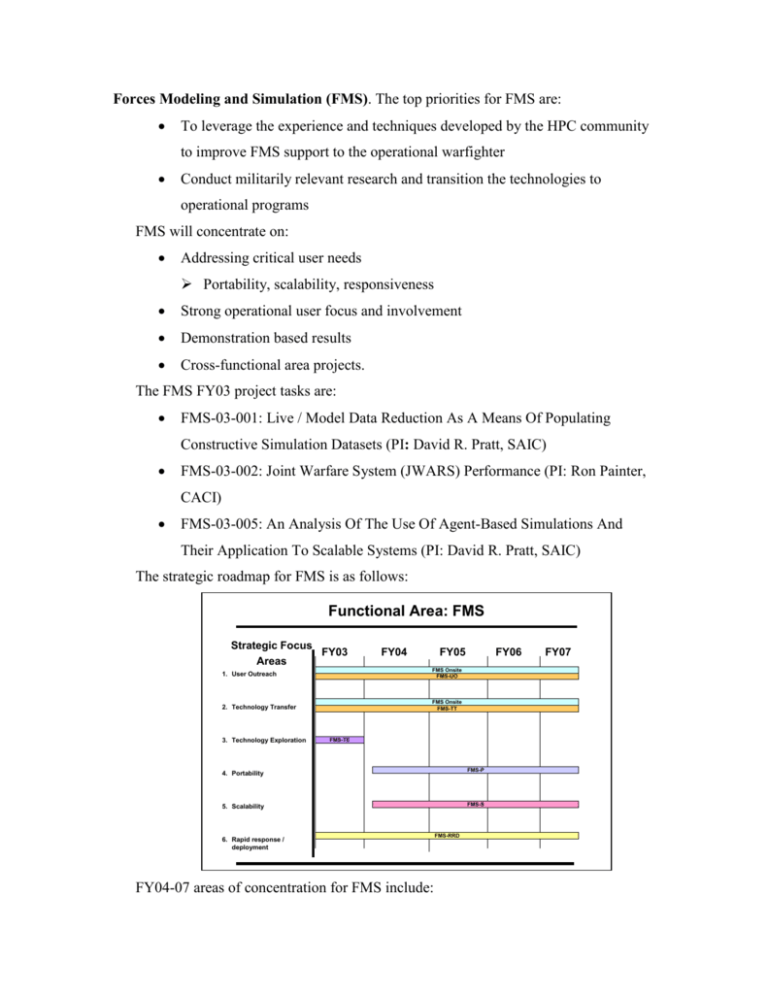
Forces Modeling and Simulation (FMS). The top priorities for FMS are: To leverage the experience and techniques developed by the HPC community to improve FMS support to the operational warfighter Conduct militarily relevant research and transition the technologies to operational programs FMS will concentrate on: Addressing critical user needs Portability, scalability, responsiveness Strong operational user focus and involvement Demonstration based results Cross-functional area projects. The FMS FY03 project tasks are: FMS-03-001: Live / Model Data Reduction As A Means Of Populating Constructive Simulation Datasets (PI: David R. Pratt, SAIC) FMS-03-002: Joint Warfare System (JWARS) Performance (PI: Ron Painter, CACI) FMS-03-005: An Analysis Of The Use Of Agent-Based Simulations And Their Application To Scalable Systems (PI: David R. Pratt, SAIC) The strategic roadmap for FMS is as follows: Functional Area: FMS Strategic Focus FY03 Areas FY04 FY05 1. User Outreach FMS Onsite FMS-UO 2. Technology Transfer FMS Onsite FMS-TT 3. Technology Exploration FY06 FMS-TE FMS-P 4. Portability FMS-S 5. Scalability 6. Rapid response / deployment FY04-07 areas of concentration for FMS include: FMS-RRD FY07 FMS-UO: User Outreach — FMS is a non-traditional HPC area. For this reason, a concerted effort needs to be made to reach out to the FMS community to “create the market” for HPC services and resources and to assist in the transformation of the community's perceptions. FMS-TT: Technology Transfer — The HPC community has developed a large number of algorithms and lessons learned concerning the optimization of parallel codes. This project area has been set up to aid the transition of experience in the HPC community to the FMS community via pilot projects that demonstrate the proof of principle and applicability of the technology. FMS-TE: Technology Exploration — Investigates use of new / novel technologies to the FMS domain. This effort will be discontinued in favor of more focused technology area exploration. FMS-P: Portability — Due to the operational nature of the FMS community, codes will need to run on commodity deployable hardware in addition to the HPC resources. This functional area looks into techniques and the application of tools to make such configuration as seamless and automated as possible. FMS-S: Scalability — In conjunction with portability, the scalability of codes is a major concern. The number of entities that can be simulated while maintaining a fixed time ratio notionally defines scalability. As the systems scale up (or don’t in many cases) the bottlenecks in the code are exposed. The purpose of this thrust to leverage the lessons learned with HPC codes to aid in improvements in reducing or eliminating such bottlenecks. FMS-RRD: Rapid Response / Deployment — The Air Force’s AETF and Army’s FCS programs are prime examples of the shift of emphasis from the cold war force structure to more responsive and “lighter” forces. As a key component of the training and planning cycle, FMS needs to become more responsive and able to deploy quickly. In this thrust we examine the ability of leveraging the horsepower of the HPC resources to provide a rapid “first cut” capability that can later be refined by the user to suit the operational commitment. The FMS UAP includes: Larry Peterson (SPAWAR-Systems Center, Govt CTA Lead) Steve Gordon (Air Force Agency for Modeling and Simulation [AFAMS]) Mike Macedonia (U.S. Army Simulation, Training, and Instrumentation Command [STRICOM]) Dave Hoffman (U.S. Army Training and Doctrine Command [TRADOC] Analysis Center [TRAC]-White Sands Missile Range [WSMR]) Niki Deliman (ERDC / TRAC-Monterey [MTRY]) FMS is in the process of re-examining the membership of the UAP based on the responsiveness and input from the current members.



